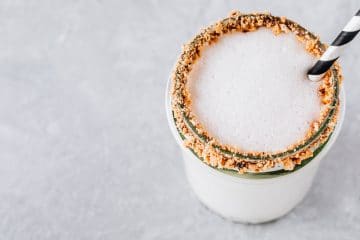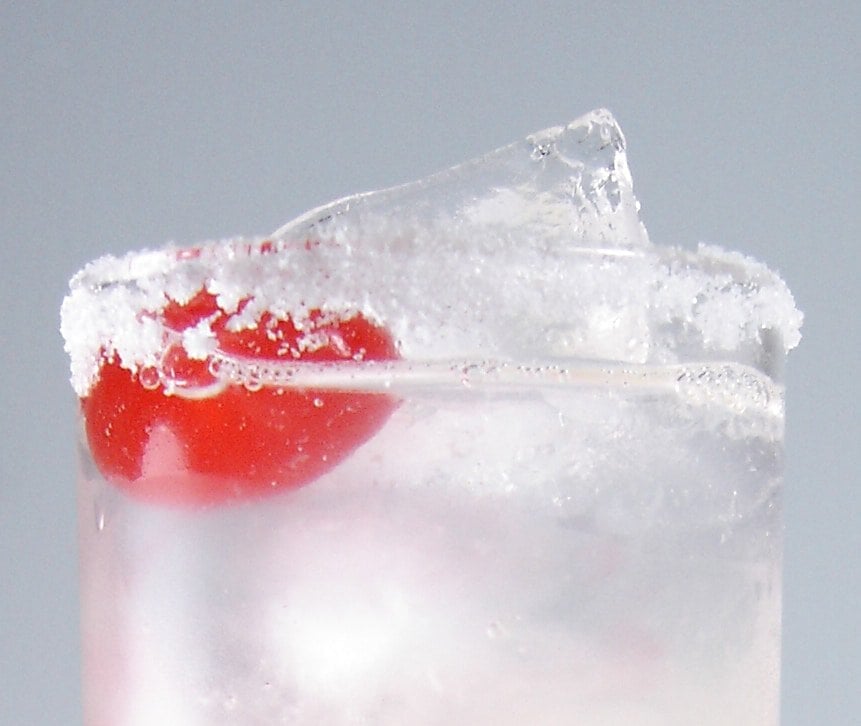The world of alcohol is fraught with risks and great bartenders know how to manage them. One method is to insert a low or non-alcoholic drink into the mix. Unfortunately, most non-alcoholic drinks suck, though things are getting better. One area that offers a lot of potential is essential oils and soda fountain techniques. The actual “Holy Grail” would be a drink that tastes like an alcoholic drink without the alcohol, and I think I’m getting pretty close with my research. One of the key ingredients is Cognac Oil. Curious?
[wp_ad_camp_3]Low alcohol drinks are part of my buzz management concept. It’s the idea that most people genuinely feel the best buzz after a certain number of drinks, depending on weight, gender and tolerance. For me, that means about two drinks in the first hour on a Friday afternoon at the bar. Beyond that, we enter the realm of drunkenness where our cognitive faculties are impaired (i.e. driving is out of the question) and the seriousness of the hangover increases with each additional drink. Wouldn’t it be nice if we could just maintain that perfect buzz? And that’s where inserting a flavourful non or low alcohol drink into the mix can help. So here are some techniques and ingredients that will fix this.
Cognac oil is the natural component that gives brandy its unique flavour. It is produced by yeast during fermentation and some of the oil is captured in the alcohol during the distillation process. The remainder is found in the lees which is basically the left oleftover. If after the alcohol is distilled off, you continue to distil the remaining liquid, mostly water, after that you will eventually distil off a tiny fraction of oil that was historically referred to as “oil of wine” or œnanthic ether. This oil has a strong, sweet, fruity aroma with that characteristic brandy smell. Obviously, it is fairly expensive since it is produced in very small quantities but for our purpose, we only need a few drops to make a dozen drinks.
For our drink, Cognac Oil provides the aromatics to make things interesting. When people recognize an aroma they’ll make an association to what they think they are imbibing. If they smell cognac, they are more likely to believe they are drinking a cognac-based drink. However, the flavour of cognac is more complex than a single fraction of the distilled mass. We are also trying to create something unique, so we’ll be adding some additional oils to broaden the flavour profile.
Beyond aroma, it is essential to have an enjoyable taste profile (i.e. what we sense on our tongue). When we paint with that palette we have a very limited selection compared to aroma. The key flavours are sweet, sour, salty, bitter and umami. We can also work in some sensory elements like spiciness, astringency and viscosity.
Since this drink has a wine/cognac focus we definitely want to use sweet and sour components. A touch of saltiness is helpful to bring out the flavours and bit of bitterness will round things out. A wee bit of spiciness will give this drink some bite. And it is important to remember that alcoholic cocktails have bite so when creating these low alcohol drinks we need to account for that sensory element.
Sweet
Simple syrup is the obvious solution but using simple syrup and cognac oil would create a single note drink. We want something more compelling. The best way to do this is to use dealcoholized white wine and sugar to make a syrup.
Another thing to consider is viscosity. The viscosity of a drink can contribute to a long finish, which is very desirable. Cooking techniques often use starches to thicken things like sauces, but that won’t work in a drink. One of the easiest, and taste neutral, ways to thicken a drink is to use pectin. Yep, the same stuff you use to make jams and jellies. For this drink, I’m lucky enough to be able to get a good Riesling jelly from the grocery store. The pectin in the jelly helps to give the drink some “legs”.
Depending on the taste profile you want in the finished drink you can use any type of jelly (strawberry, grape, etc.). You can also make your own wine jelly by following the instructions on the pectin package and substituting an equal quantity of wine for the fruit juice. You can use the low or no sugar pectin, but I’d recommend adding some sugar otherwise the wine won’t set. Additionally, the alcohol in the wine may interfere with the setting pectin, which isn’t bad, you’ll end up with a thick liquid instead of a jelly. That’s fine because you want to be able to mix this into your drink without chunks. Nobody likes chunks in their drink.
Sour
If we were to create this drink without an appropriate acid (sour flavour) we would get a spineless drink. My preference is to use Acid Phosphate, for two reasons. First, Acid Phosphate has a neutral/pure sour flavour so it doesn’t interfere with the flavour profile we are trying to build. Lemon and lime juice contain their own essential oils that will fight for attention with the cognac oil. It is like working with the “blank slate” sour that Acid Phosphate provides.
Lactart would also work well and one of the very cool things about lactic acid is that it has a “drying” characteristic. During prohibition lactic acid was added to low alcohol beer to make the beer taste closer to the higher alcohol versions, and it does work.
Salt
The second reason I like using Acid Phosphate is that it incorporates salts. Having an element of saltiness helps enhance flavours and salt is a key ingredient in every kitchen. It can be used in drinks, but it has to be done appropriately. Table salt has a very distinct taste that doesn’t work as well in cocktails. But table salt is not the only salt that can enhance flavours. Salts of calcium, magnesium and potassium enhance flavours just as well. And like the sour element of our drink, Acid Phosphate is the perfect addition here. Acid Phosphate doesn’t have any sodium in it, but it does have calcium, magnesium and potassium salts and their flavour profile is neutral, but they do enhance flavour.
Spicy and Astringent
If we were using a dealcoholized red wine, astringency would be easy. Since I’m using white wine I’ve decided to be creative and work some spice into the drink. For this drink, I will be using green peppercorn essential oil. The great thing about this oil is that it is easy to use and it has a fruitiness that compliments the cognac oil. It also has some heat that lingers on the tongue, providing another layer to our pleasant finish.
Aromatics
Aside from the cognac oil and green peppercorn, I also added a few drops of Chamomile essential oil. The aroma of this oil is quite pleasant, with a fruity floral quality, and works well with the cognac oil.
Bitterness
Obviously, any aromatic bitters suitable for a cocktail will work here. For this drink, I used Fee’s Peach Bitters.
Aromatic Cognac Syrup
5 oz dealcoholized white wine*
4 tablespoons Wine Jelly
4 tablespoons sugar
7 drops Cognac Oil
3 drops Chamomile Essential Oil
3 drops Green Peppercorn Essential Oil
2 teaspoons Glycerin (optional) **
Instructions
Place 2 tablespoons of sugar into a glass bowl and add the essential oils. Muddle with a spoon to mix the oils with the sugar and then add the wine jelly and optional glycerin, mix and set aside. Dissolve the remaining sugar in the dealcoholized white wine. Combine the two mixtures and stir to dissolve. You can heat the mixture in a microwave for 20 seconds if the sugar doesn’t completely dissolve.
* you can use regular wine if a small amount of alcohol in the final drink is not a concern
** the glycerin helps to keep the oils in solution
Memories of Brandy
1 oz Cognac Syrup
4 oz De-Alcoholized White Wine
1 teaspoon Acid Phosphate
2 dash Fee Brothers Peach bitters
Combine ingredients in a mixing glass with ice and stir until well chilled. Strain into a highball glass with fresh ice. Garnish with fresh fruit and an edible flower (violets work well).
When made properly, most people would have a hard time differentiating this drink from an alcoholic one. The flavour profile of this drink is on the easy drinking side, but the addition of more / different essential oils or other flavour components can easily add more kick. Additional info on working with essential oils can be found in the Homemade Soda post.
This drink doesn’t have to be alcohol-free. For a low alcohol version, that’s punched up a bit, simply add a half ounce of a good cognac, rum or fruit brandy. Slivovitz and pear brandy are enjoyable.
With this as the basis of how to make great tasting low alcohol drinks, you can take this information and open up a whole new world of drinks for your friends, guests and customers.
If you found this post interesting you will find a lot more information in my book Fix the Pumps which is currently on sale for $10.95 + $3.99 shipping and includes a copy of the downloadable PDF ebook.
[wp_ad_camp_3]



